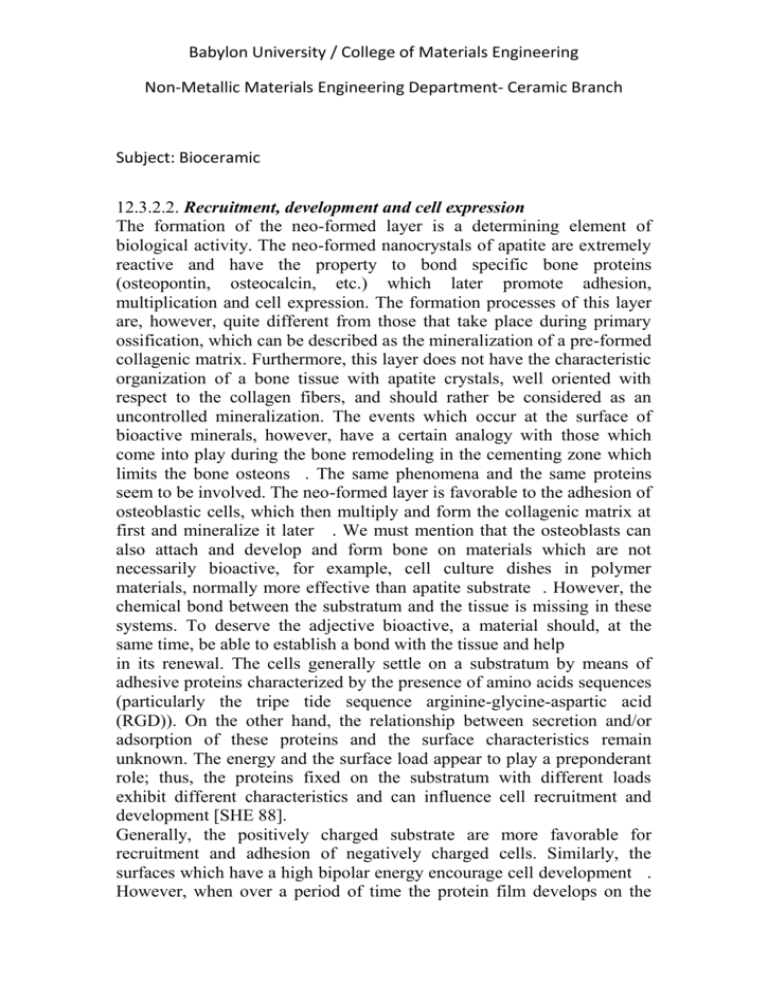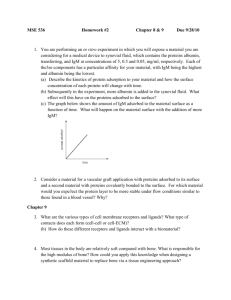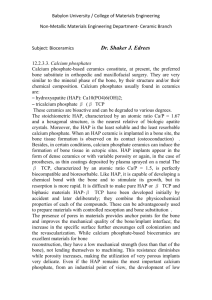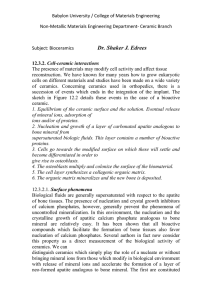Recruitment, development and cell expression
advertisement

Babylon University / College of Materials Engineering Non-Metallic Materials Engineering Department- Ceramic Branch Subject: Bioceramic 12.3.2.2. Recruitment, development and cell expression The formation of the neo-formed layer is a determining element of biological activity. The neo-formed nanocrystals of apatite are extremely reactive and have the property to bond specific bone proteins (osteopontin, osteocalcin, etc.) which later promote adhesion, multiplication and cell expression. The formation processes of this layer are, however, quite different from those that take place during primary ossification, which can be described as the mineralization of a pre-formed collagenic matrix. Furthermore, this layer does not have the characteristic organization of a bone tissue with apatite crystals, well oriented with respect to the collagen fibers, and should rather be considered as an uncontrolled mineralization. The events which occur at the surface of bioactive minerals, however, have a certain analogy with those which come into play during the bone remodeling in the cementing zone which limits the bone osteons . The same phenomena and the same proteins seem to be involved. The neo-formed layer is favorable to the adhesion of osteoblastic cells, which then multiply and form the collagenic matrix at first and mineralize it later . We must mention that the osteoblasts can also attach and develop and form bone on materials which are not necessarily bioactive, for example, cell culture dishes in polymer materials, normally more effective than apatite substrate . However, the chemical bond between the substratum and the tissue is missing in these systems. To deserve the adjective bioactive, a material should, at the same time, be able to establish a bond with the tissue and help in its renewal. The cells generally settle on a substratum by means of adhesive proteins characterized by the presence of amino acids sequences (particularly the tripe tide sequence arginine-glycine-aspartic acid (RGD)). On the other hand, the relationship between secretion and/or adsorption of these proteins and the surface characteristics remain unknown. The energy and the surface load appear to play a preponderant role; thus, the proteins fixed on the substratum with different loads exhibit different characteristics and can influence cell recruitment and development [SHE 88]. Generally, the positively charged substrate are more favorable for recruitment and adhesion of negatively charged cells. Similarly, the surfaces which have a high bipolar energy encourage cell development . However, when over a period of time the protein film develops on the Babylon University / College of Materials Engineering Non-Metallic Materials Engineering Department- Ceramic Branch Subject: Bioceramic surface of the material, these initial factors no longer have an effect on cell activity. It appears therefore that the kinetic factors of the protein film formation and the competitive adsorption of different proteins, probably determined by the characteristics of the surface, play a decisive role on cell activity . 12.3.2.3. Cell rehabitation Some porous materials may be preoccupied by the cells and invaded by a newly formed bone tissue. These materials should have at the beginning a definite pore size. Very large pores do not encourage bone growth, while the very small ones do not allow an adequate vascularization. The pore diameter should be a minimum of 100 μm, but could go up to 500 μm (see below). Moreover, tissue rehabitation requires interconnected pores











